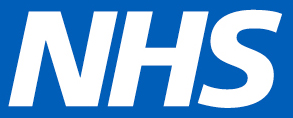Are we really listening to what our patients want or is it all about national targets?
The term 'virtual wards' is not a new one in healthcare settings, but it has had more meaning and resonance with the public and healthcare professionals alike since the COVID-19 pandemic when new and innovative ways of delivering care were being explored at pace.
I am in no doubt that delivering care closer to home for individuals and their families, given the right environment, has many benefits both physical and emotional. However, to maximise the potential we need to be listening to our population and their needs. How do we ensure that the narrative for the general public is positive and paints a true picture, rather than one that causes confusion and misunderstanding?
When developing a new service, to get the most benefits for patients, we need to bring our population with us, truly listen to their views and be open and honest about the challenges currently being faced in the health service. We are certainly not there yet. In our recent public survey, we asked for views on virtual wards and heard comments including:
- Cheapskate service
- Keeping people out of hospital
- Some nonsense the government has thought of
- People are left to suffer at home because there are no beds in hospital
In my experience, the terminology and naming of the services being developed are often confusing and not clear what they are all about. A leg ulcer clinic or a falls service naming is clear for everyone to understand but virtual wards can conjure up all sorts of different connotations for people. I was asked once during a public meeting about ten years ago, about virtual ward development ‘will this mean surgery will take place on the kitchen table?’ Just because we, as health professionals, understand the meaning, we can’t expect our residents to be able to decipher between virtual wards, hospital at home, NHS@Home and any other variations to the name – let's be consistent and clear.
So how do we change negative public views, to ensure that people are cared for in the most appropriate place to ensure they achieve the best outcomes from their care being provided at home?
Are the current targets responsible for the current levels of inappropriate referrals being received as funding is based on bed numbers?
Surely we should be taking a patient outcome focus rather than focusing on reaching referral targets?
For more information on virtual wards, please
Find out more about our transformation consultancy
Spotlight: Virtual wards: Patient insights report launch
As part of NHS SCW Spotlights, a programme of short and snappy webinar events, we shared the findings of our recent patient insights review, highlighting patient, clinician, and general public views of virtual wards.
Speakers included:
Charlotte Lynch – Strategy and Policy Lead, NHS England Virtual Wards Team
Dr Rebecca Winterborn – Clinical Director, BNSSG, NHS@Home
Ruth Gazzane – Associate Director, Transformation, NHS SCW
Kate Knight – Programme Director, Transformation, NHS SCW
Watch the full session video:









